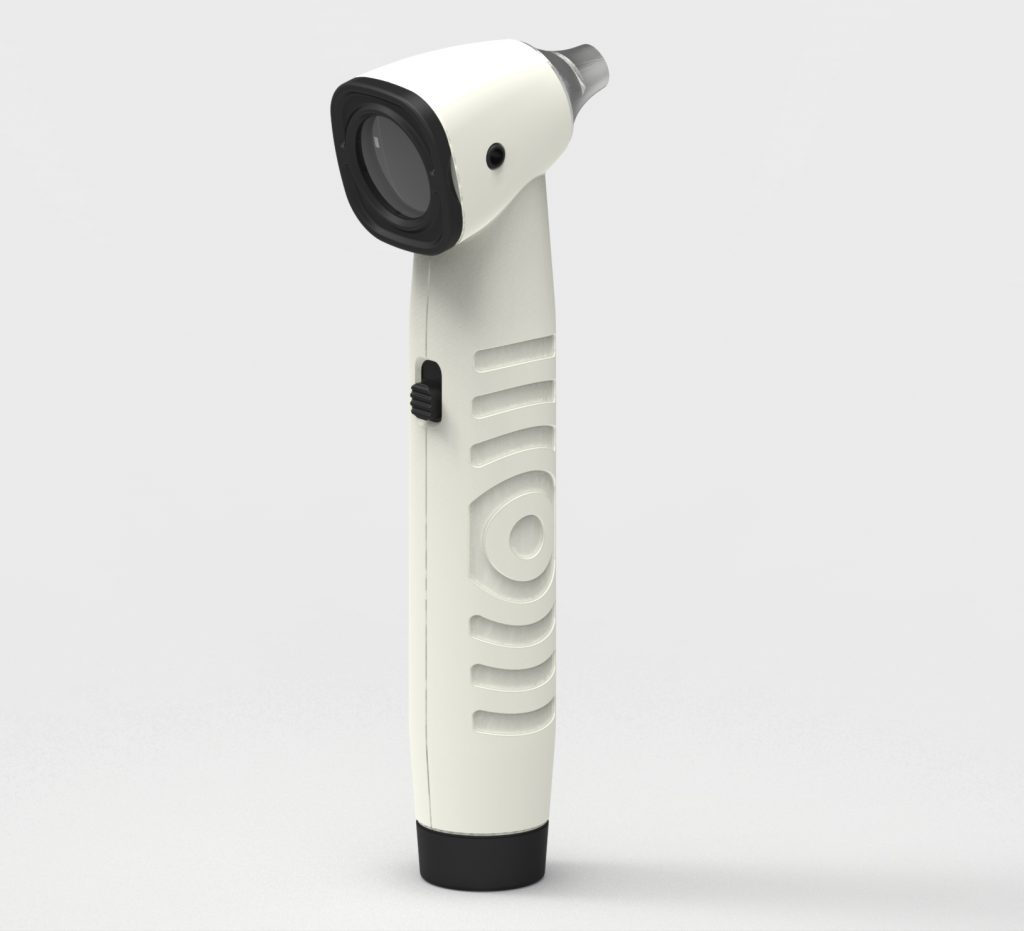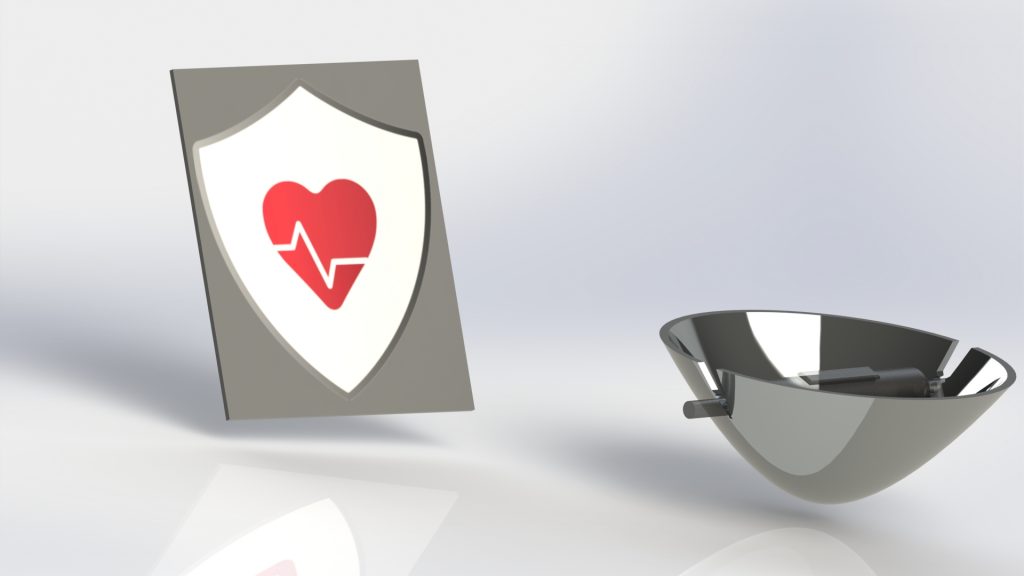With advances in medical technology as personal analytics, we’re experiencing a new shift in how healthcare is delivered. Particularly when it comes to preventative medicine, more options are becoming available to consumers to track and manage their well-being. But as medical product design shifts from hospitals to households, certain new design considerations come into play.
In this day and age when wearables look subtle and inconspicuous, people want to use medical devices that have the same characteristic. Medical devices that are designed for the consumer call for a bit of a less-obviously-medical aesthetic than those designed for hospital procurement officers.
We’re talking prosthetics with aesthetics.! It all comes down to medical products that are designed less medical-looking.
Why “Less-Medical” Designs Matter More Now Than Ever
Take, for instance, the aging demographics that rely on medical devices to be self-sufficient. Oxygen concentrators, respirators, pumps, and lifts will become part of their lives, but they don’t need to be defined by them. These products can be made in such a way that they reflect an impressive and independent lifestyle, enhance the quality of life, and create a great perception.
Even more common are devices used not necessarily for acute treatment, but just for overall health maintenance and monitoring. Apps and wearable devices used to help people maintain their health and wellness probably don’t want to be too obvious: people tend to be pretty private about their health.
8 Tips to Design a “Less-Medical” Product
1. Understand User Requirements
Most of the time, people don’t get to decide how medical products are designed before they’re sold on the market. And unless they are specialist items, such as hearing aids or prosthetics, manufacturers don’t design for a specific individual either.
This means a designer must strike a balance between developing a product that serves its purpose without overlooking the design aesthetics capture the attention of consumers. How else can product designers turn a profit and help people at the same time?
With this in mind, designers must understand user requirements from a general to a personal level. The usual request these days are medical devices that are discreet and not embarrassing. From the data, a designer can develop a concept design along with a design review form and checklist. Doing so will also ensure everyone is moving in the same direction.
2. Listen and Take Direction From Consumers
People may not always know precisely what they want, especially where their health is concerned, but they will be more than willing to tell you how they feel about something. Present them with a design prototype and ask them what they think and feel about it. The conversation is likely to involve you providing them the technical side of things, while they will provide you with their perceptions and thoughts from their personal perspective.
Listen and use their input as a guide on how to improve the design. Find a way to integrate their ideas with yours.
3. Create and Present A Visual Concept Design
Based on the data gathered, you can then start creating a design or improving an existing one. Words can be translated in many ways, with risks of being misunderstood. This is why they must be translated into pictures or images that you can present to customers and investors.
To ensure that you get the ideas right, show your visual interpretation to your target audience and your design team. Is this what they meant when they said they wanted a product that blends in or is discreet? How discreet can it get without losing its sense of character or its main functionalities?

4. Develop And Design Products That Connect On An Emotional Level
A mood board can be a useful tool for presenting your ideas to stakeholders in order to gauge their emotional reaction. It’s a kind of collage where images, text and other materials are arranged to evoke a particular emotion or reaction. It helps during the creative processes, allowing designers to illustrate a style they wish to pursue or to set a specific mood and to evaluate the extent to which it resonates with an audience.
They can be put to good use in designing medical products that connect emotionally. In a business setting, mood often influences buyer behavior. The more pleasant a consumer feels about a store’s atmosphere, the more comfortable they will feel spending their hard-earned money. Using the same concept would help ensure a concept design that is not only functional but speaks to consumers as well.
5. Set Up Design Reviews And Checklists
Design reviews and checklists help point you in the right direction and keep you on track. They provide the tools to ensure that design and development are effective, safe, and appropriate. This is why they have to be set up after every design process. For instance, between the feasibility study and concept design development, between concept design development and verification process, or between verification and validation.
The design reviews and checklists also provide consumers an opportunity to raise and communicate any concerns or issues they have about a specific medical design. The checklist should ensure that all aspects of design and development are covered as well.
6. Design A Product With Focus On Building a Strong Consumer Brand
Consumer brands are brands that sell to end-users rather than to other businesses. So the focus should be on medical products that appeal to the public rather than to the manufacturers. How else can this be achieved than to understand user requirements and use customer input as a design guide? It’s important to design with the consumer in mind.
It’s so easy for a manufacturer to project their ideas and needs on design and development, which usually lacks consumer focus. It is, therefore, a designer’s responsibility to bring the focus back to individual people or risk obsolescence and obscurity.
7. Integrate Innovation Wherever Possible
The healthcare market is rife with products, wearables, and peripherals that are connected to a smartphone one way or another. The rise of the app and mobile phone usage has definitely changed the game for medical products, allowing them to overlap with consumer products. It also helps that many patients of today are looking for medical tools and items that look more like other high-quality consumer goods and less like stolen hospital equipment.
Take, for example, the Peek eye exam camera and app that is compatible with mobile devices. It allows a physician anywhere around the world to diagnose an eye exam remotely and prescribe treatment.
8. Run It By The Customers Again
Say your design complied with all the requirements listed above. Ready to jump into manufacturing? You might want to ask your customers again. It is one thing for them to complete reviews and checklists, but another for them to provide feedback based on an actual experience with a product. This is where rapid manufacturing and prototyping can play a big role in market research.
Run a preference test to determine if the design really satisfies the needs for discretion and aesthetics. The goal is to come up with a design that people love.
Regardless of the medical product to be developed, it is important for the design process to start and end with the consumers. They are the ones to buy the product, after all.
Some Examples Of “Less-Medical” Medical Products
Bedside Econorail – Collapsible, portable with a great, slim design, it looks more like a bed accessory than a mobility support. It also installs on any home or hospital bed and comes complete with a travel bag and a cover with 4-pocket organizer.
Male Urine Guard – Use this instead of a diaper, and spare yourself the hassle of wearing pants or shorts that have to be big enough to accommodate a thick diaper. No need to deal with an adhesive strip or any fastening device either.
Condom Catheter – There are design differences per brand, but the main purpose is the same – support urological care and male incontinence without the embarrassment factor.
These products could use some improvements, and the best designer can definitely help achieve this.
Work with Experienced Designers
If you want to create a desirable and less-medical-looking product, you must have an experienced and talented designer on your team. Someone who understands your needs and that of your consumers is the absolute choice. Design skills are just half of it, after all.
Look no further than Cad Crowd! We connect clients with top-tier industrial designers and 3D modeling freelancers. We have to reliable expertise to help you make the most out of your new medical product idea.
We offer flexible services to suit any kind of project. Whether you’re looking for a quick solution or someone you can work with long-term, Cad Crowd has the designer for you.
We have the designer you need to help you develop a product that looks discreet, aesthetically pleasing, and fully functional. Contact us today for a free quote. We’ll analyze the specific requirements of your design project, and connect you with leading, pre-qualified design professionals who will work with you to make your vision a reality.
